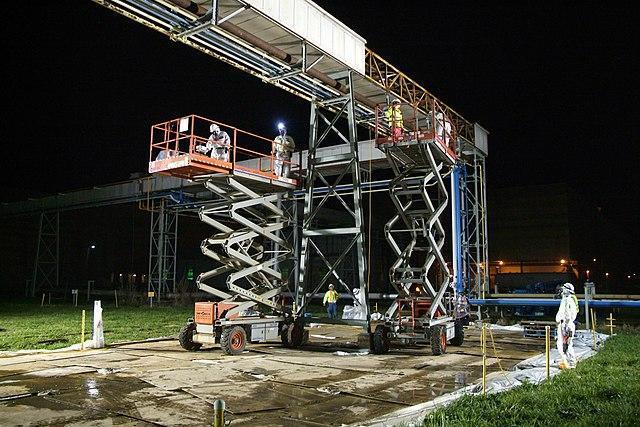Scissor lifts are a common tool used in construction environments to help workers safely access hard-to-reach areas. These versatile machines offer a stable platform for workers to stand on while they work, and they can be adjusted to various heights to accommodate different tasks.
However, like any construction equipment, scissor lifts can pose a risk if they are not used properly. To help businesses keep their employees safe on the job, here are some tips for using scissor lifts in construction environments:
- Follow the manufacturer’s guidelines: It’s important to follow the manufacturer’s guidelines for using scissor lifts to ensure that they are operated safely. This includes wearing the proper protective equipment, following proper loading and unloading procedures and adhering to any other guidelines provided by the manufacturer.
- Use the proper safety equipment: Scissor lifts should be equipped with safety devices like guardrails, toe boards, and fall protection systems to help prevent accidents and injuries. Make sure these devices are in good working condition and are being used as intended.
- Inspect the equipment regularly: Inspect scissor lifts for any damage or maintenance issues, and take care of any problems promptly. This can help prevent accidents and injuries caused by equipment failure.
- Use scissor lifts for their intended purpose: Scissor lifts should only be used for their intended purpose, and workers should not attempt to use them for tasks they are not designed for.
- Train workers on proper use: Make sure your workers are properly trained on how to use scissor lifts safely, including how to start and stop the machine, how to adjust the platform height, and how to use the safety devices.
- Follow proper loading procedures: Make sure that scissor lifts are properly loaded and that the load is evenly distributed. Overloading a scissor lift can cause it to become unstable and increase the risk of an accident.
- Use caution when moving the lift: When moving a scissor lift, follow proper procedures and use caution. Avoid driving the lift over uneven surfaces or obstacles, and keep a safe distance from other workers and equipment.
- Don’t use scissor lifts in adverse weather conditions: Scissor lifts should not be used in adverse weather conditions, as this can increase the risk of an accident. This includes high winds, lightning, or heavy rain or snow.
- Follow proper shutdown procedures: When shutting down a scissor lift, follow proper procedures to ensure the machine is safely secured and ready for maintenance.
- Use scissor lifts in well-ventilated areas: Scissor lifts should be used in well-ventilated areas to reduce the risk of carbon monoxide poisoning. Make sure that the area is free of any hazardous gases or vapors that could be harmful to workers.
By following these tips and taking the necessary precautions, businesses can help ensure that their employees are safe when using scissor lifts in construction environments. Proper training and equipment maintenance is critical to maintaining a healthy and productive workforce, and they can help businesses avoid costly accidents and injuries.
Do you need Online Construction Safety Training?
Try a free demonstration of Scissor Lifts in Industrial and Construction Environments
Scissor Lifts in Industrial and Construction Environments Online Course


